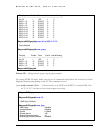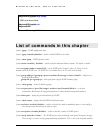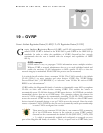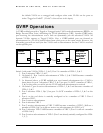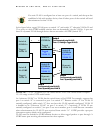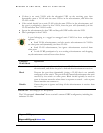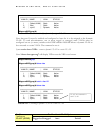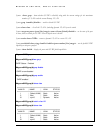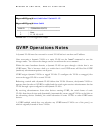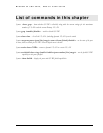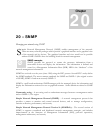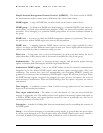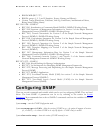
MAGNUM 6K SWITCHES, MNS-6K USER GUIDE
configuration
Learn Generate advertisements.
Forward advertisements
for other VLANs
Receive advertisements
and dynamically join any
advertised VLAN
Receive
advertisements and
dynamically join any
advertised VLAN that
has the same VID as
the static VLAN
Do not allow the
port to become a
member of this
VLAN
Block Generate advertisements
Forward advertisements
received from other ports
to other VLANs
Do not dynamically join
any advertised VLAN
Receive
advertisements and
dynamically join any
advertised VLAN that
has the same VID
Do not allow the
VLAN on this
port
Disable Ignore GVRP and drop
all GVRP advertisements
Ignore GVRP and
drop all GVRP
advertisements
Do not allow the
VLAN on this
port
FIGURE 132 – GVRP options
As the above table indicates a port that has a tagged or untagged static VLAN has the option to
both generate advertisements and dynamically join other VLANs.
The unknown VLAN parameters are configured on a per interface basis using the
CLI. The tagged, untagged, Auto, and Forbid options are configured in the VLAN
context. Since dynamic VLANs operate as tagged VLANs, and it is possible that a
tagged port on one device may not communicate with an untagged port on another
device, GarrettCom Inc. recommends that you use Tagged VLANs for the static
VLANs.
A dynamic VLAN continues to exist on a port for as long as the port continues to receive
advertisements of that VLAN from another device connected to that port or until you:
• Convert the VLAN to a static VLAN
• Reconfigure the port to Block or Disable
• Disable GVRP
• Reboot the switch
The time-to-live for dynamic VLANs is 10 seconds. That is, if a port has not received an
advertisement for an existing dynamic VLAN during the last 10 seconds, the port removes itself
from that dynamic VLAN.
Configuring GVRP
The commands used for configuring GVRP are
235



